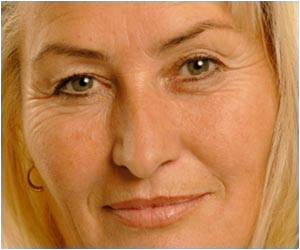 An explanation as to how our skin constantly regrows has been identified by University of Sheffield scientists.
An explanation as to how our skin constantly regrows has been identified by University of Sheffield scientists.The research-conducted in collaboration with The Procter and Gamble Company (P and G), makers of Olay-has implications for combating the effects of aging and perhaps even skin cancer.
The Sheffield/P and G team developed an "in silico" (computer) model of human skin biology, capturing how the outer layers of the skin are developed and maintained over time.
This model simulation or "virtual" skin was then used to test the three most popular theories of how skin cells function to regenerate our skin, the largest human organ, over a three-year period.
When the simulation was run according to two of the theories, the virtual skin failed to fully regenerate.
Only one theory enabled the virtual skin to still be in good shape after three years, as Dr. Xinshan Li (University of Sheffield Faculty of Engineering) and Dr. Arun Upadhyay (P and G), the lead co-authors explained in their research.
"The theory which seems to fit best says that skin has a population of 'sleeping' stem cells, which sit in the lowest layer of the skin but don't constantly divide to make new cells," Dr. Li said.
"However, these sleeping cells can be called into action if the skin is damaged, or if the numbers of other types of more mature skin cells decrease, ensuring that the skin can be constantly regenerated under all conditions," the researcher said.
The model showed that we gradually lose these sleeping stem cells over time-which would explain why our ability to regenerate our skin reduces as we age. "Each time we wake up these cells, to heal a wound or replenish stocks of other cells, a few of them don't go back into sleep mode, so the population slowly reduces," Dr. Li said.
"This explains why older skin is slower to heal and in part why our skin changes as we age. By understanding this mechanism better, it might be possible to find ways to combat the effects of aging on our skin," Dr. Li added.
Computer modelling of skin biology is the latest step in the evolution of skin science.
It allows scientists to project the activity of tissues like skin that are difficult to follow in live systems for extended periods.
Currently, 3-dimensional cultures of engineered human skin are viable for only a few weeks and clinical studies in humans are only practical for a few months.
With the development of in silico models scientists can predict for the first time what happens in skin as it ages year by year even as it ages decade by decade.
The research is published in Nature Scientific Reports.
Source-ANI


No comments:
Post a Comment